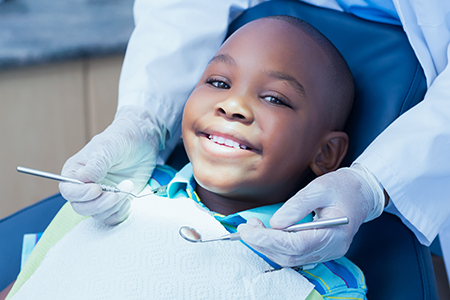General & Cosmetic Dentistry
The office of Keith A. Kye, DDS, FAGD serves the neighborhoods of Huntersville, Lake Norman, Davidson and Cornelius.


At the office of Keith A. Kye, DDS, FAGD, the development and long-term health of your child's smile are central to the care we provide. Our approach combines age-appropriate prevention, clear communication, and attentive clinical exams so children and parents both feel informed and confident about oral health decisions. We aim to help families build healthy routines that last a lifetime.

Good oral health begins long before a full set of teeth appears. Early routines—simple daily cleaning, limiting sugary drinks, and checking the mouth regularly—set a foundation that reduces the chance of decay and dental anxiety. We encourage parents to begin gentle cleaning as teeth erupt and to establish consistent brushing and flossing habits as children grow.
Dedicated preventive care is one of the most effective tools for protecting young smiles. Regular visits allow our team to identify small issues before they become larger problems and to reinforce positive habits with practical, age-appropriate guidance. We teach children how to brush effectively and make oral care part of an enjoyable routine rather than a chore.
Parents often ask how to balance supervision and independence as kids learn to care for their teeth. We recommend a gradual shift: closely supervise brushing up to about age six or seven, then transition responsibility with periodic check-ins. Our staff offers tips on techniques, timing, and tooth-friendly snacks so families can maintain progress at home.
Every checkup is an opportunity to evaluate more than just cavities. During a routine exam we assess the growth of the jaw and face, bite relationships, gum health, and overall oral function. These evaluations help us understand how a child’s smile is developing and whether any interventions or preventive steps are advisable.
We use digital radiography selectively to get clear, low-dose views of developing teeth and jaw structures when clinically indicated. These images help detect hidden decay, assess space for future adult teeth, and confirm healthy bone and tooth formation. Our goal is to use the least invasive tools necessary to gain useful diagnostic information.
Professional cleanings during routine visits remove plaque and tartar buildup that brushing and flossing can miss. Beyond cleaning, these visits are a chance to review dietary habits, discuss fluoride and sealant options, and provide customized advice based on your child’s risk for decay. Preventive care at regular intervals reduces the need for more complex treatments later.

Preventive treatments such as fluoride varnishes and dental sealants are effective, evidence-based ways to lower the risk of decay in children. Fluoride strengthens enamel, while sealants provide a protective barrier over the grooves of molars where food and bacteria tend to collect. We recommend these options based on each child’s individual needs and decay risk.
When a cavity is identified, our focus is on conservative, child-friendly care that minimizes discomfort and preserves tooth structure. We tailor treatment plans to the child’s age, development, and cooperation level, always explaining steps in clear, reassuring language so families know what to expect. For urgent issues, we prioritize prompt, compassionate intervention to relieve pain and prevent complications.
Keeping active children safe is another preventive priority. Properly fitted mouthguards reduce the risk of dental injuries in contact and running sports. We can advise on the best type of protection and offer custom appliances when appropriate, making it easier for guardians to protect their child’s smile during play.
Facial growth, tooth alignment, and bite development all progress rapidly during childhood. Early observation allows us to identify patterns—like crowding, asymmetric growth, or harmful oral habits—that can affect long-term alignment. Detecting these signs sooner often simplifies future treatment and helps avoid more extensive procedures down the road.
The American Association of Orthodontists recommends an evaluation around the age of seven to spot developing orthodontic concerns. If conditions are present that could benefit from early intervention, we coordinate care and timing with families so treatment—when needed—begins at an optimal stage of development. Our recommendations are based on clinical findings, not on a fixed schedule.
Non-orthodontic factors can also influence growth and bite, such as prolonged thumb-sucking, persistent pacifier use, or nasal airway issues. We work with caregivers to address habits through positive reinforcement and practical strategies, and when medical or specialty care is necessary, we guide families toward appropriate referrals.

A child’s environment plays a big role in oral health. Balanced meals, limited sugary snacks and drinks, and a consistent brushing schedule are simple but powerful contributors to strong teeth and gums. We provide straightforward nutrition advice and practical tips for packed lunches and after-school snacks that support dental wellness.
Establishing a positive, supportive routine helps children view dental care as part of overall health. We encourage families to model good behaviors, use positive language around dental visits, and celebrate progress. Small rituals—like a favorite toothbrush or a brushing chart—can make self-care engaging for younger children and reinforce healthy habits as they grow.
Sometimes children need extra support—young patients who are anxious, medically complex, or have special sensory needs may benefit from tailored appointment planning. Our team takes time to prepare visits, explain procedures in kid-friendly terms, and create a calm, reassuring clinical environment. When additional options are appropriate, we will discuss them and ensure parents feel fully informed.
Our role is to be a reliable clinical resource and a cooperative partner in your child’s oral health. That means listening to family goals, answering questions without jargon, and providing clear guidance on prevention and treatment. We share practical strategies you can use at home and work with caregivers to develop realistic routines that fit each child’s needs and temperament.
Communication is central to our approach: before and after procedures we make sure families understand why a recommendation was made and what steps will help maintain results. We welcome conversations about growth patterns, behavioral concerns, or any issues that affect a child’s comfort and willingness to engage in dental care.
Healthy childhood smiles are the result of consistent prevention, timely clinical care, and supportive habits at home. Regular exams, targeted preventive treatments, and early attention to growth and alignment help children avoid more extensive interventions later. Our team focuses on practical, evidence-based care delivered with patience and respect for young patients and their families.
If you would like to learn more about pediatric dentistry or how our office supports the oral health of children and teens in the Huntersville community, please contact us for more information.
A pedodontist is a dentist who has received advanced specialty training in meeting the dental needs of children from infancy to adolescence. Pedodontists, also referred to as "pediatric dentists," study child psychology, behavior management, caring for children with special needs, methods of handling oral/facial trauma, and various techniques for providing anesthesia and sedation. Pedodontists also understand the complexities of facial growth and development and have the clinical skills required to meet the dental needs of all children at every stage of development. Most of all, pedodontists are passionate about what they do and enjoy working with children. They strive to make every dental experience a positive one as they help children establish a strong foundation for good oral health.
Even before your child is born, their first set of teeth is already forming. In fact, by one year of age, some of your baby's front teeth will have already come into place. While the arrival of your baby's first teeth is only one of many developmental milestones, it represents an excellent time to begin a program of oral care. According to recommendations from the American Dental Association, babies should see the dentist around the time of their first birthdays.
Your baby's first teeth typically begin to appear in the 6 to 12-month range. While this is an extraordinary milestone, you need to be aware that your baby may find the experience a little bit uncomfortable. Teething can make babies feel irritable. They may be fussy, have trouble sleeping, not want to eat, and drool quite a bit.
Although you are powerless to speed up the process of teething, there are a few things that you can do to soothe your baby as the new teeth are erupting into place. Common approaches to helping your baby feel more comfortable while getting new teeth, include teething rings or a cold spoon or moist gauze rubbed over their gums.
Even for these few new teeth, it's absolutely essential to establish an effective regimen of oral care. For information on when your baby's first set of teeth will erupt into place, consult this timeline from the American Dental Association: Eruption Charts
Some children persist in sucking their thumbs or fingers beyond their preschool years. For these children, the activity continues to be a source of comfort, relaxation, and security. It may even help them fall asleep at night. However, it's essential to be aware that in the long-term, a finger sucking habit is not healthy.
If your child's thumb or finger sucking habit is still present when the permanent teeth begin to come in, your child is at a higher risk of developing a bad bite. By the age of five or six years, you need to constructively and gently help your child stop the habit.
It's also a good idea to have a comprehensive evaluation at this time. Your pedodontist can assess if there are any habit related alterations to the alignment of your child's teeth or jaws, or if it is affecting their speech or swallowing patterns. They can also discuss habit control strategies with you, as well as follow your child's bite and facial development as they grow. If interceptive appliances or corrective orthodontic care are recommended, the timetable and best options in care will be explained in complete detail.
A child should visit a dentist by the time the first tooth appears or by the first birthday so a dental home can be established early. Early visits are brief and focus on prevention, guidance for caregivers, and a gentle introduction to the dental environment. Starting early helps reduce the risk of decay and lessens the chance of developing dental anxiety later in life.
That first appointment also gives clinicians a baseline for growth and development and allows parents to ask practical questions about teething, feeding, and home care. With early education and routine visits, families can adopt healthy habits that support long-term oral health. Regular checkups thereafter help monitor eruption patterns and intervene promptly when needed.
A pediatric dental checkup includes a careful exam of the teeth, gums, tongue, and the child’s oral function to evaluate eruption patterns, bite relationships, and overall oral health. The clinician observes growth and development while addressing any behavior or comfort concerns so the visit is reassuring for both the child and caregiver. Routine visits are also an opportunity for families to ask questions about nutrition, oral habits, and at-home care.
Professional cleaning removes plaque and tartar that home care may not reach and reinforces effective brushing and flossing techniques. Digital radiographs are used selectively when images are needed to assess developing teeth, detect hidden decay, or evaluate jaw structures with low radiation exposure. Preventive options such as fluoride varnish or sealants are discussed based on the child’s individual risk profile.
Caregivers should begin gentle cleaning as soon as the first tooth erupts and use a soft-bristled toothbrush with a smear of fluoride toothpaste for infants and a pea-sized amount for older toddlers. Brushing should last about two minutes and cover all tooth surfaces using gentle circular motions while flossing begins when adjacent teeth touch. These simple routines reduce plaque buildup and set a foundation for independence as coordination improves.
Supervise brushing until roughly age six or seven and transition responsibility gradually with periodic check-ins and coaching. Positive reinforcement, consistent scheduling, and engaging tools like a brushing chart or a favorite toothbrush can make daily care more enjoyable for young children. Modeling good habits by brushing together also reinforces the behavior and normalizes oral hygiene.
Fluoride varnish and dental sealants are safe, evidence-based preventive treatments that lower the risk of cavities when applied appropriately. Fluoride strengthens enamel and supports remineralization, while sealants act as protective barriers over the deep grooves of molars where bacteria and food commonly collect. Both measures are widely recommended by dental professionals for children at elevated risk of decay.
At the office of Keith A. Kye, DDS, FAGD, we recommend these treatments based on each child’s individual risk and developmental stage rather than applying them automatically. We explain the benefits, expected effects, and any follow-up care so caregivers can make informed decisions. When indicated, these preventive services are delivered gently and efficiently during routine visits.
When cavities are found, the focus is on preserving healthy tooth structure using conservative restorations combined with techniques that prioritize the child’s comfort. Local anesthesia, behavior guidance strategies, and child-appropriate explanations are used to reduce anxiety and pain during treatment. Clinicians choose restorative materials and techniques suited to the child’s age, cooperation level, and the extent of decay.
For urgent issues such as severe pain or infection, prompt care is provided to relieve symptoms and prevent complications. Sedation or referral to a pediatric dental specialist is considered only when necessary and after discussing safety and expectations with the family. Follow-up appointments and preventive planning are emphasized to help avoid repeat problems.
An orthodontic evaluation is recommended around age seven to identify early signs of misalignment, crowding, or bite problems that could affect future development. Early observation allows clinicians to monitor jaw growth, eruption patterns, and habits that may influence alignment. Not every child needs early treatment, but timely assessment helps determine whether monitoring or intervention would be most beneficial.
If orthodontic concerns are identified, we discuss possible timing, treatment options, and referrals to specialists when appropriate. Some issues respond to simple habit interventions such as addressing thumb-sucking or pacifier use, which can improve outcomes without appliances. Coordination with families and specialists ensures any treatment respects growth and developmental needs.
In a dental emergency prioritize airway, breathing, and circulation, and then address the injured area: control bleeding with gentle pressure, and for a knocked-out permanent tooth hold it by the crown and transport it in milk or the child’s saliva when possible. For a primary tooth that is dislodged or fractured, avoid attempting to replant it and seek professional guidance to protect the underlying permanent tooth. Severe pain, swelling, or signs of infection require immediate evaluation to prevent more serious complications.
Contact our office in Huntersville or seek emergency dental care so the team can assess the situation and provide appropriate treatment to relieve pain and stabilize the area. Quick action often improves outcomes and can preserve teeth or limit the extent of future intervention. When calling, describe how the injury occurred and any first aid already provided so clinicians can prepare for the child’s arrival.
Children with dental anxiety, sensory sensitivities, or medical complexities receive individualized support to make visits predictable and comfortable. We use behavior guidance techniques, clear age-appropriate explanations, and gradual acclimation to reduce fear and build trust. Allowing caregiver presence, scheduling slower-paced appointments, or using visual aids can help some children participate more effectively.
For patients with significant needs we coordinate care with medical providers and consider adaptive strategies to ensure safety and comfort. When appropriate, we discuss additional supports, specialized appointment planning, or referral to a pediatric dental specialist. The goal is to provide equitable, compassionate care by adapting communication and the clinical environment to each child.
Custom mouthguards provide a superior fit and more reliable protection for young athletes compared with generic or boil-and-bite options, helping reduce the risk of dental injury during contact and collision sports. A well-fitted appliance stays in place, cushions impacts, and improves comfort so the athlete is more likely to wear it consistently. We consider the sport, position, and the child’s dental development when recommending protection.
Custom guards are fabricated to match the child’s anatomy, which enhances both effectiveness and compliance. Our team can advise families on when a mouthguard is appropriate and provide custom fabrication or recommend trusted alternatives based on individual needs. Regular checks ensure the guard still fits properly as the child grows and serves as an opportunity to reinforce safe play habits.
Maintaining oral health between visits depends on a balanced diet, limiting sugary snacks and drinks, and following a consistent brushing and flossing routine. Encouraging regular meal and snack times reduces constant exposure to cavity-causing sugars, and water is the best beverage choice to support oral wellness. Consistent twice-daily brushing with fluoride toothpaste and daily flossing when teeth touch remain essential preventive measures.
The office of Keith A. Kye, DDS, FAGD provides families with practical guidance, individualized prevention plans, and reminders about recall intervals to support lasting results. Open communication with our team helps address emerging concerns and ensures home routines align with clinical recommendations. When families and clinicians work together, children are more likely to develop lifelong habits that protect their smiles.

The office of Keith A. Kye, DDS, FAGD serves the neighborhoods of Huntersville, Lake Norman, Davidson and Cornelius.